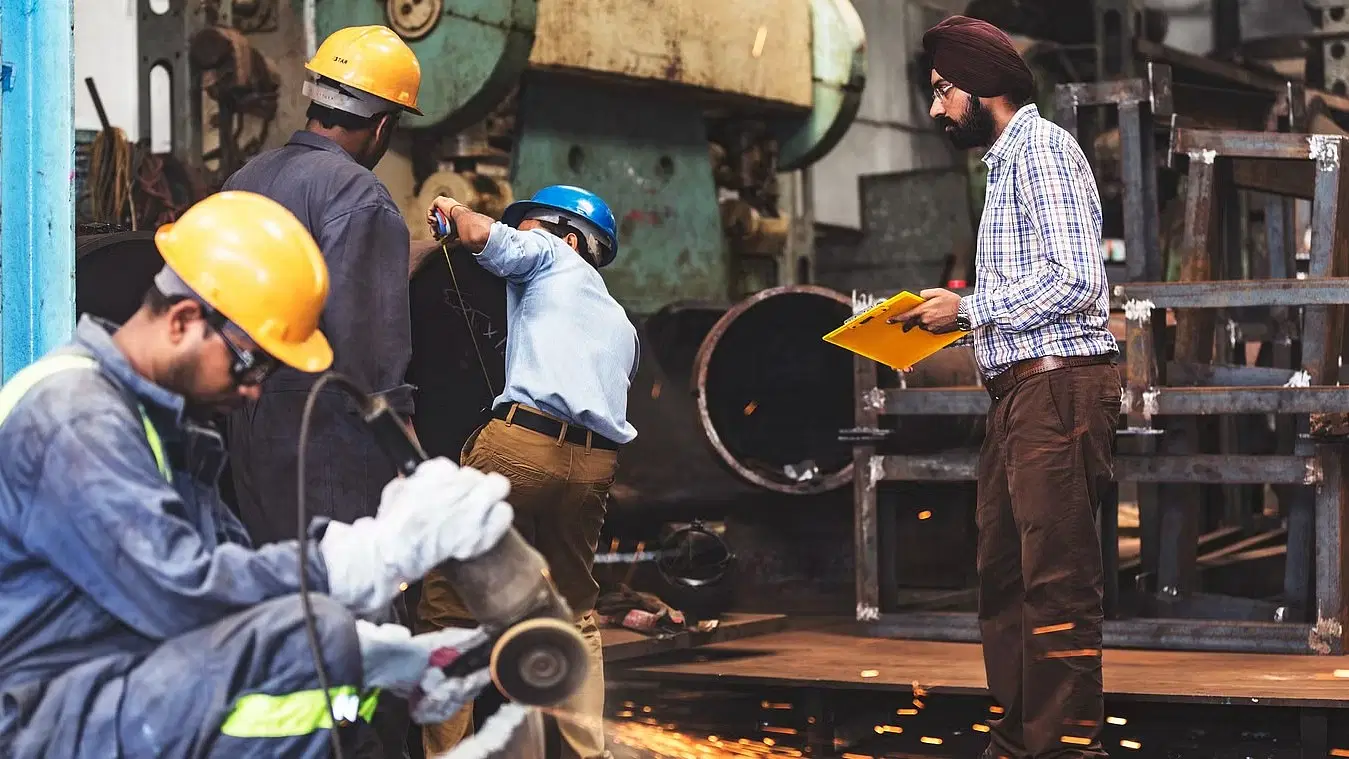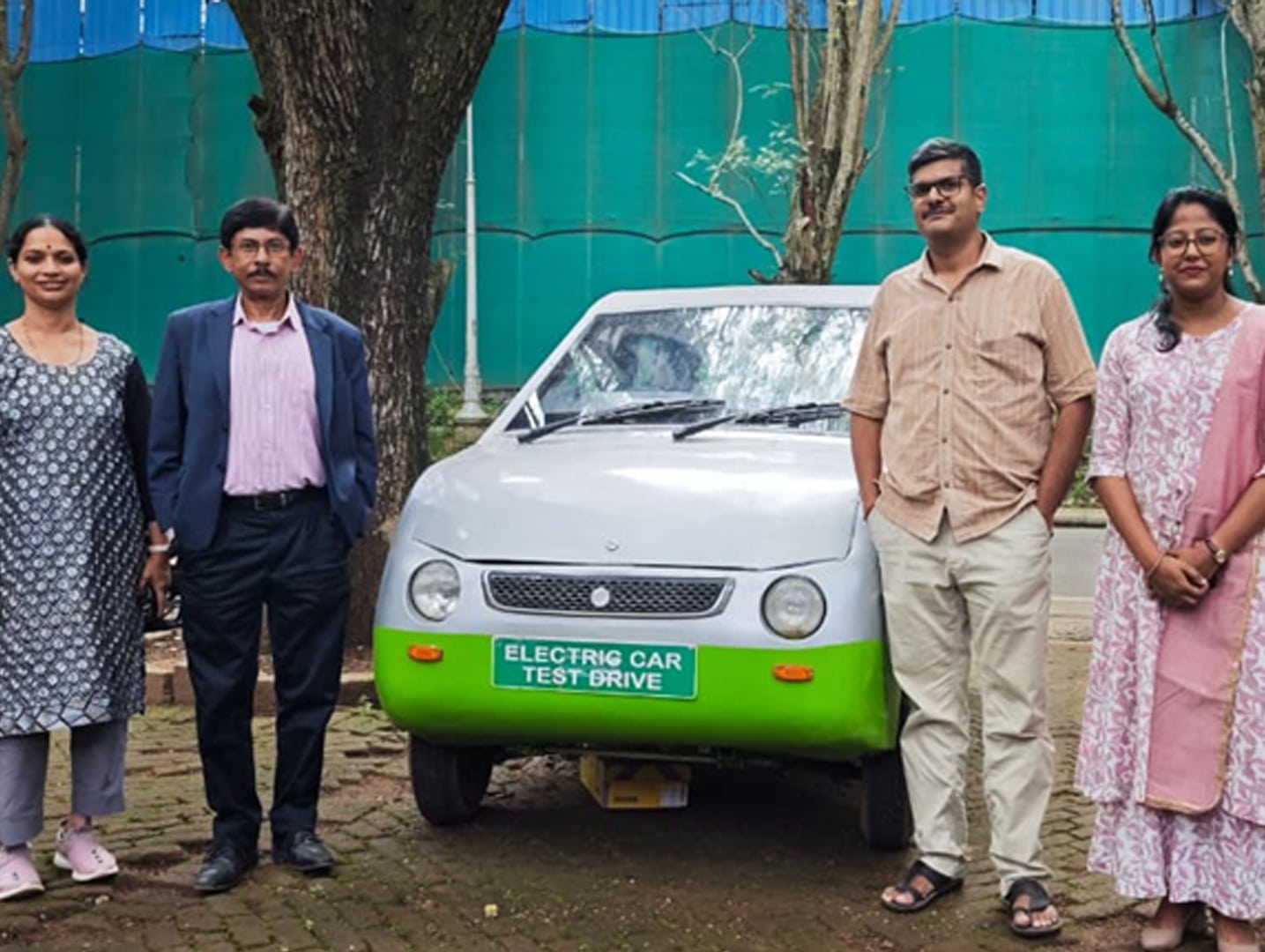Publication – Deccan Herald
Under the Viksit Bharat 2047 vision, manufacturing is projected to play an even more significant role, with a target of contributing 25 per cent to GDP.
Manufacturing is increasingly becoming a key pillar of India’s economic growth, driven by the robust performance of sectors such as automotive, engineering, chemicals, pharmaceuticals, and consumer durables. Before the pandemic, manufacturing contributed 16–17 per cent to the country’s GDP and is now poised to become one of the fastest-growing sectors in the economy.
Under the Viksit Bharat 2047 vision, manufacturing is projected to play an even more significant role, with a target of contributing 25 per cent to GDP. By 2047, this vision aims to build a $30-trillion economy, emphasising self-reliance, global leadership in innovation, and sustainable growth. Currently, the capital goods sector– with a market size of $ 92 billion and production valued at $32 billion– accounts for 12 per cent of India’s manufacturing output and contributes 1.8 per cent to GDP, according to the Confederation of Indian Industry (CII).
India is a land of innovations with a huge potential to become a global manufacturing hub. Recent momentum in the manufacturing sector has been fuelled by enhanced access to advanced technologies, growing R&D capabilities, government-led initiatives such as Make in India, and increased collaboration among institutions to drive innovation.
However, challenges remain, including dependency on imports, global competitiveness, and workforce readiness, which must be addressed for India to establish itself as a global manufacturing hub.
On Independence Day this year, Prime Minister Narendra Modi emphasised the importance of enhancing production quality to align Indian products with international standards. He underscored the potential of the “design in India, design for the world” approach, emphasising its role in boosting exports and driving economic growth.
Address the gap.
Limited R&D investment: India spends less than 1% of its GDP on R&D, with only 41% of this investment coming from the government and corporates. Compared to global manufacturing leaders such as the US, Japan, and Germany, this is significantly lower. Limited investment restricts innovation, product quality enhancement, and the ability to develop cutting-edge technologies.
Academia-industry disconnect: The lack of collaboration between academia and industry results in underutilised talent and inadequate workforce preparedness. Bridging this gap requires integrating research-driven projects into academic curricula, leveraging institutional infrastructure for training, and aligning academic goals with industry needs to foster innovation and develop a skilled workforce.
Import dependency: India remains heavily reliant imports of capital goods essential for manufacturing processes. This dependence on foreign technology and equipment limits local manufacturing capabilities and impedes the creation of self-reliant manufacturing ecosystem.
Inadequate infrastructure: Scattered infrastructure — including unreliable power supply, inefficient logistics, and inadequate industrial facilities — reduces operational efficiency. High logistics costs and unreliable infrastructure make Indian manufacturing less competitive globally, often exceeding costs in countries like China.
Underutilised talent: Despite a vast pool of young, diverse talent, there remains a skills gap between education and the demands of modern manufacturing. A lack of expertise in advanced technologies slows down the adoption of updated practices and limits global competitiveness. Bridging this gap requires a collaborative effort between academia and industry to cultivate a future-ready, skilled workforce.
To unlock its full potential and compete internationally, the manufacturing sector must focus on innovation. This involves fostering a culture of research and development, embracing advanced technologies such as artificial intelligence, Internet of things, and automation, and promoting sustainable manufacturing practices. By prioritising innovation, the sector can enhance product quality, reduce costs, and create unique value propositions that meet global standards. A strong emphasis on innovation will not only strengthen India’s position in the global supply chain but also fuel economic growth and job creation domestically.
With the shared vision of Viksit Bharat 2047 and the goal of positioning India as a global manufacturing hub, India urgently requires comprehensive product accelerator programmes. Current initiatives largely focus on marketing support, leaving a critical gap in end-to-end support for enterprises. A holistic product accelerator programme would provide guidance and support in product R&D, business models and investments, promoting market-driven, design-led manufacturing. This approach would empower India to innovate and compete effectively on the global stage.
To empower and enable aspiring enterprises in product development and the creation of local manufacturing hubs, IISc, through its Product Accelerator Programme, unites premier Indian institutions, and enterprises to develop innovative solutions through strategic partnerships and cutting-edge R&D. A dynamic manufacturing sector will be the cornerstone of India’s economic growth and impact in the coming decade.
(The writer is Director – Product Acceleration at Foundation for Science Innovation and Development, IISc, Bengaluru)



